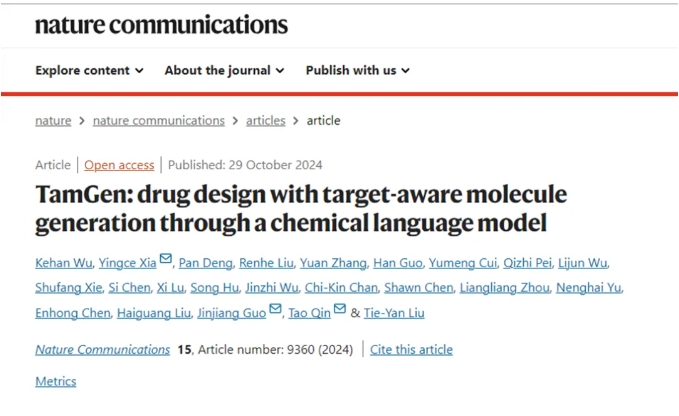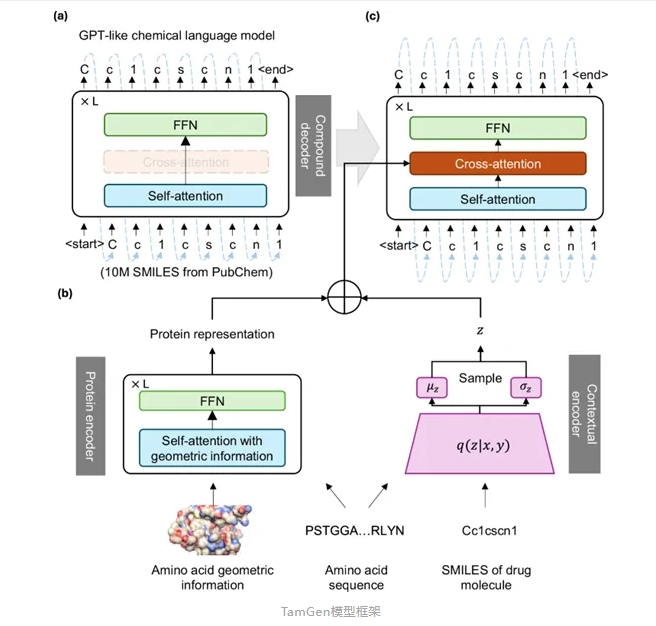The AI drug discovery platform published its latest research results in Nature Communications
The Global Health Drug Discovery Institute (GHDDI) and Microsoft Research AI for Science have collaborated to develop the AI drug design platform TamGen, and published their latest research results in Nature Communications on October 29. TamGen uses a generative AI model based on the Transformer self-attention mechanism to achieve precise molecular generation, optimization, synthesis and biological experimental verification of pathogenic target proteins, opening up a new path for innovative drug discovery, especially in the research of infectious diseases such as drug-resistant tuberculosis.

At present, the molecules designed on this platform have achieved good results in the enzymatic assays for screening active compounds. Researchers have successfully discovered and designed 14 compounds that exhibit significant inhibitory activity against Mycobacterium tuberculosis ClpP protease. Among them, the most potent compound showed a half-maximal inhibitory concentration (IC50) of 1.9 μM.

TamGen model framework
Challenges facing generative drug design
Generative AI technologies represented by ChatGPT are revolutionizing the field of drug discovery and development. Generative drug design can create new molecules from scratch without relying on existing templates or molecular scaffolds. Traditional screening methods, such as high-throughput screening, physical simulation-based screening, and the latest deep learning-based screening, usually search for hit compounds from compound libraries containing 10,000 to 100 million molecules. Generative drug design can explore a vast chemical space, which is estimated to contain more than 10 to the power of 60 potential compounds.
This way holds the promise of discovering some unexplored compound classes, as well as novel compounds that are not in existing libraries. However, the compounds generated by previous generative methods often lack satisfactory pharmaceutical properties. These methods usually only focus on limited drug-related attributes and fail to significantly improve the success rate of the subsequent drug discovery process. In addition, even if a variety of virtual screening technologies are used, screening for different targets in such a huge chemical space still requires a lot of computing resources and time, and the impact of model accuracy needs to be concerned about. In other words, although AI generates a large number of novel compounds, existing methods still face challenges in delivering effective drug candidates.
TamGen allows AI to be targeted
In order to meet the challenges of generative drug design, GHDDI and Microsoft Research jointly developed TamGen. Its innovation lies in the addition of a cross-attention mechanism based on the GPT-like generative model, and by learning a large amount of known and simulated protein-ligand structure data, the model can simultaneously consider the information of the pathogenic target protein when generating new molecules. This improvement enables TamGen to accurately generate molecules with potential interactions based on the active site information of the target protein, thereby enhancing the targeting of molecular generation and the rationality and accuracy of drug design, and then combining molecular simulation, cellular activity AI models and expertise for further virtual screening and optimization, thereby greatly improving the efficiency and success rate of discovering drug candidates. Dr. Guo, head of Data Science department, said: " The traditional generative AI design method is more like making countless keys first, and then trying to open the door one by one. TamGen is like comparing keyholes and matching keys more accurately."
Future Outlook
Next, TamGen's work will focus on integrating the advantages of more three-dimensional physical methods, such as using Monte Carlo Tree Search (MCTS) or molecular dynamics simulation technology, to further improve the affinity and stability of generated compounds binding against target proteins and other important drug properties, such as physicochemical stability, synthetic feasibility, and ADME/T properties.
Ding Sheng, institute director of GHDDI, said: " TamGen's initial results mark an important innovation in the field of generative drug design, providing strong evidence of the practicality and applicability of AI drug discovery in the future. As artificial intelligence technology continues to advance in the field of drug discovery, TamGen is expected to accelerate the development of new drugs to help address a variety of public health challenges, including tuberculosis."


